This time, the theme is the ARP Odyssey, a well-known synthesizer. So far, I've introduced masters who used the Mini Moog masterpiece, but this time, it's about the foreign musicians and record masterpieces related to another well-known synth, the ARP Odyssey.
About the ARP Odyssey
■It's not too much to say that the masterpieces of monophonic synthesizers are either the Mini Moog or the ARP Odyssey. The ARP Odyssey was introduced in 1972 and was sold until 1981 with several improvements over the years. It was the most shipped synthesizer from ARP and was beloved by many musicians.
While the control panel of the Mini Moog was black and had rotary knobs, the ARP Odyssey's had sliders lined up neatly on a white panel. In contrast to the rugged Moog, the Odyssey had a modern, sophisticated design.
Regarding the sound, the Odyssey's character was clear-cut and sharp, while the Moog's selling point was the deep, fat sound.
■The ARP Odyssey has 3 versions. In the first version, when bend the sound (pitch bending), you could raise or lower the pitch by turning the rotary knob at the bottom left of the panel to the left or right. Functionally, the Mini Moog, which had the wheel to that raised and lowered the pitch, was superior, so there were many solos that gave the impression that the bent pitch was unstable. After that, instead of the unstable rotary knob type, 3 rubber-like square buttons called PPC were included. Pressing the left PPC drops the pitch and pressing the right one rises the pitch. The middle one works as a modulation button for vibrato and tremolo. The bending and modulation effects could be changed based on how strongly the button was pressed.
■In addition, each of the 3 versions of the Odyssey is equipped with a different VCF (Voltage Control Filter). It seems that some maniac fans own 3 different Odysseys because the sounds are different depending on the characteristics of the filter.
Recently, Korg and Behringer have also reissued the ARP Odyssey. The reissued Odysseys are equipped with all 3 types of VCFs from different periods, and can be switched with one switch.
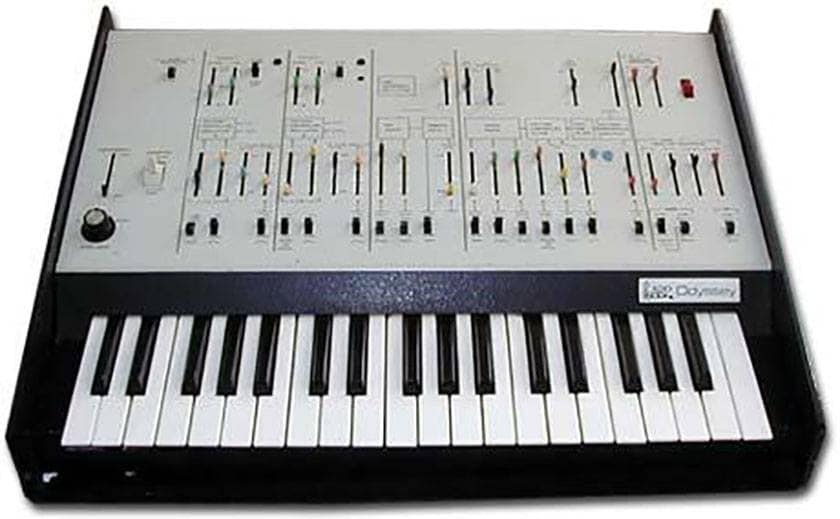
ARP Odyssey Rev1 (early model) | The knob on the lower left of the panel is used for pitch bending.
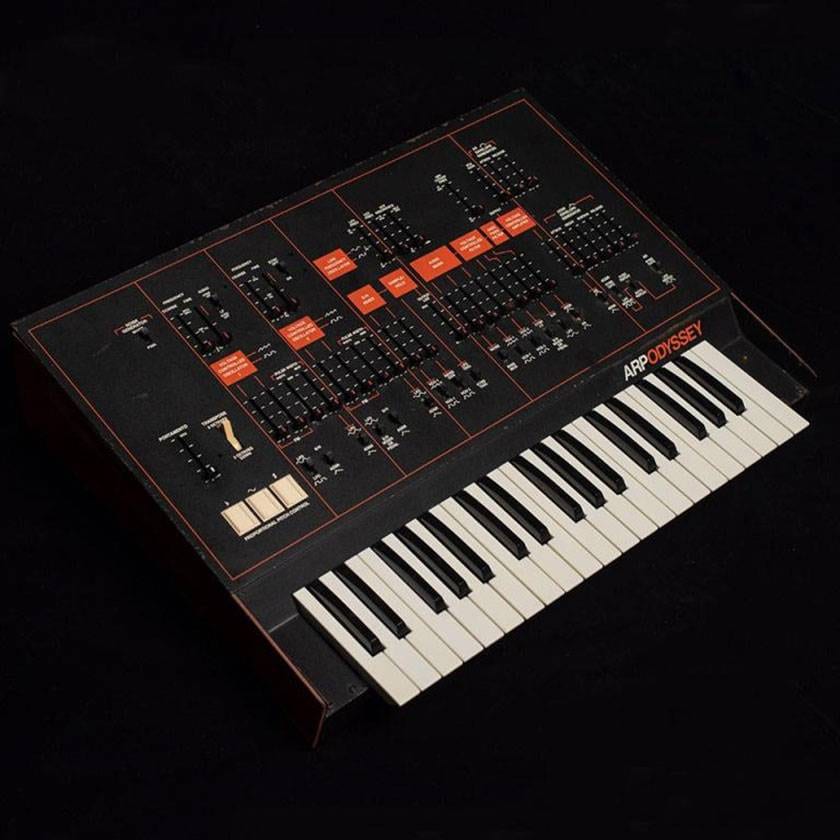
ARP Odyssey Rev3 | The buttons on the bottom left of the panel are the PPC. These rectangular white rubber buttons are for pitch bending and modulation
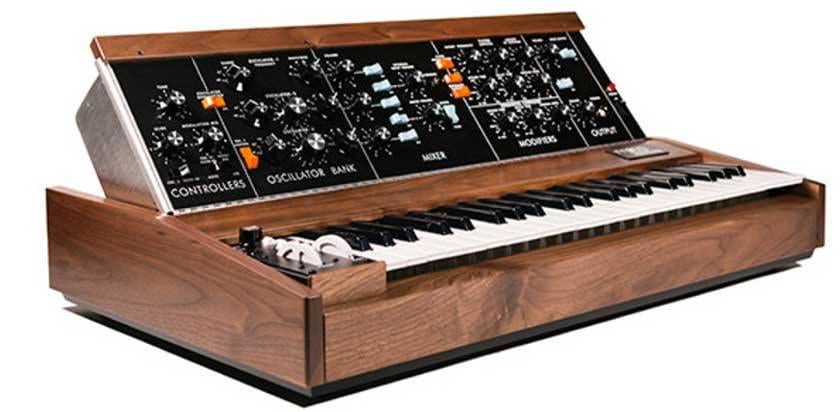
Mini Moog synthesizer
The early white Odyssey was used by Jon Lord of Deep Purple in "Burn". There are many enthusiasts in Japan as well, including Ryuichi Sakamoto and Haruomi Hosono. It's also used for synth bass in YMO songs. There are Rev.1 with white body, Rev.2 with golden lettering on black body, and Rev.3 with orange and white lettering on black body. The characteristics of each filter vary, as does the sound of the different versions, and the preferences are divided.
Recommended albums on which the ARP Odyssey was used
■Recommended album: "Night Birds" by Shakatak (1982)
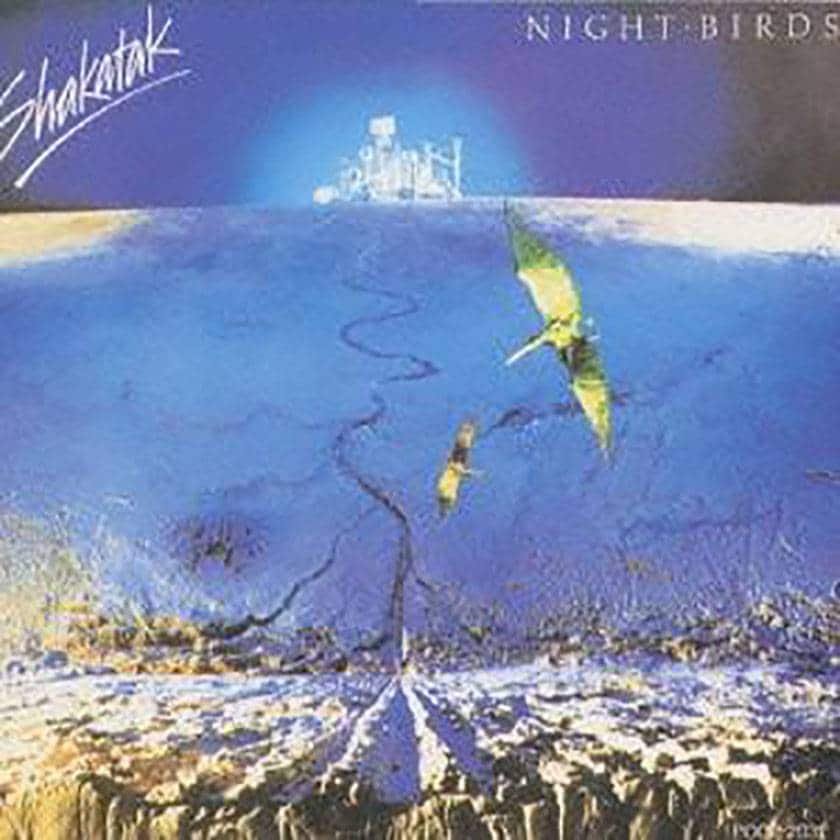
Recommended song: "Night Birds"
Shakatak was an English jazz fusion band. In 1982, their fashionable songs featuring the impressive melody of acoustic piano and female vocals became very popular. The leader, Bill Sharpe, is a pianist and ARP Odyssey user. From the beginning of the intro, he used the tone of the Odyssey's square wave (tube sound) with portamento, and you can hear the swimming melody on top of the guitar. After that, he played an impressive counter melody with the ARP Odyssey based on the theme after the catchy acoustic piano. In fact, the theme of the piano is also lightly coated with the Odyssey sound. In the second chorus, it's mixed to a large extent, giving this song more variation. While the Odyssey doesn't have a fat sound like the Mini Moog, it has an impressive sharp, tight tone. It may be a good example that the Odyssey matches a smart jazz fusion sound like Shakatak's better than the Mini Moog could do.
■Recommended album: "One Size Fits All" by Frank Zappa & The Mothers of Invention) (1977)
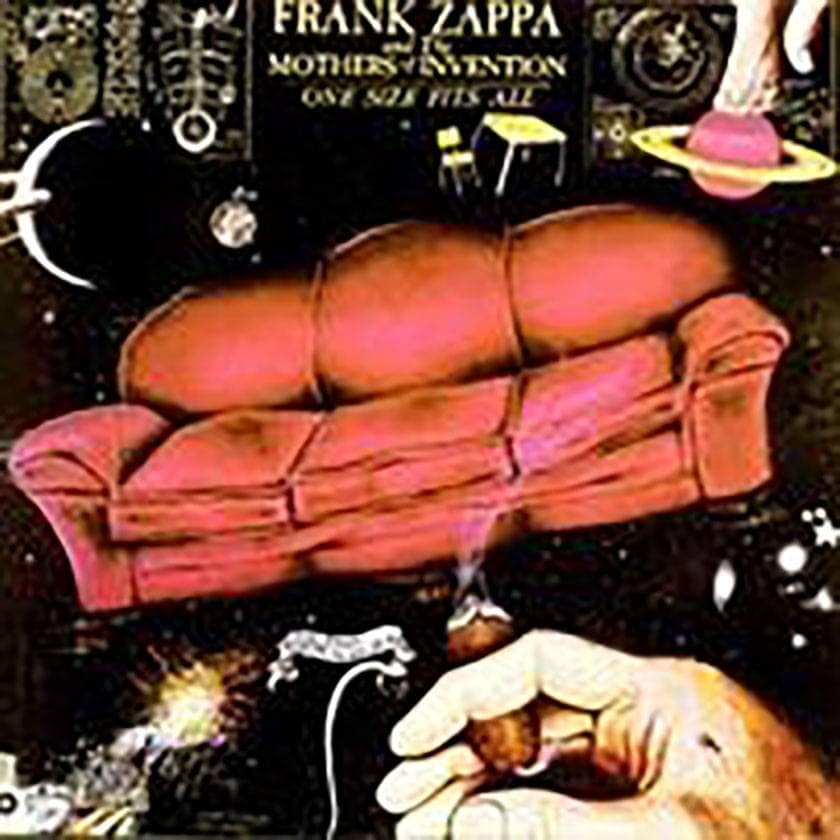
Recommended song: "Inca Roads"
It starts with Ruth Underwood's marimba theme riff. A nice prog-like (almost gong-like?) intro. Bringing in the sound of marimba here is the true genius of Zappa. The synthesizer sound effect is the white noise of the ARP Odyssey with modulation. Since a UFO is mentioned in the lyrics, the Odyssey sound is probably meant to sound like a UFO. After that, George Duke's young, almost naïve vocals float in. It's surprising that the young boss of Afro-American music would support the Zappa's eccentric music! Zappa's music has numerous irregular time signatures and rhythms, the kind that most young up-and-coming musicians could not possibly handle. In that sense, Duke, with his advanced techniques, could be said to have been one of the few young musicians who could express the sound that Zappa wanted. In the latter half of this song, you can hear dynamic, delicate performances by the masters. Improvisation by Duke on the Odyssey can be heard, as well. The fat Moog may give off a rough, sometimes crude sound, and I can understand why many musicians preferred the neat sound of the Odyssey. Later, Duke also used the Mini Moog in his solo albums, and I guess he wasn't all that particular about the instrument model being such a diverse musician, and he might've changed the instrument according to the song.
Synthesizers, musicians, recommended albums/songs picked up in this article
- Instruments: ARP Odyssey
- Musicians: Bill Sharpe, George Duke
- Albums: "Night Birds" by Shakatak, "One Size Fits All" by Frank Zappa & The Mothers of Invention
- Recommended songs: "Night Birds", "Inca Roads"


























